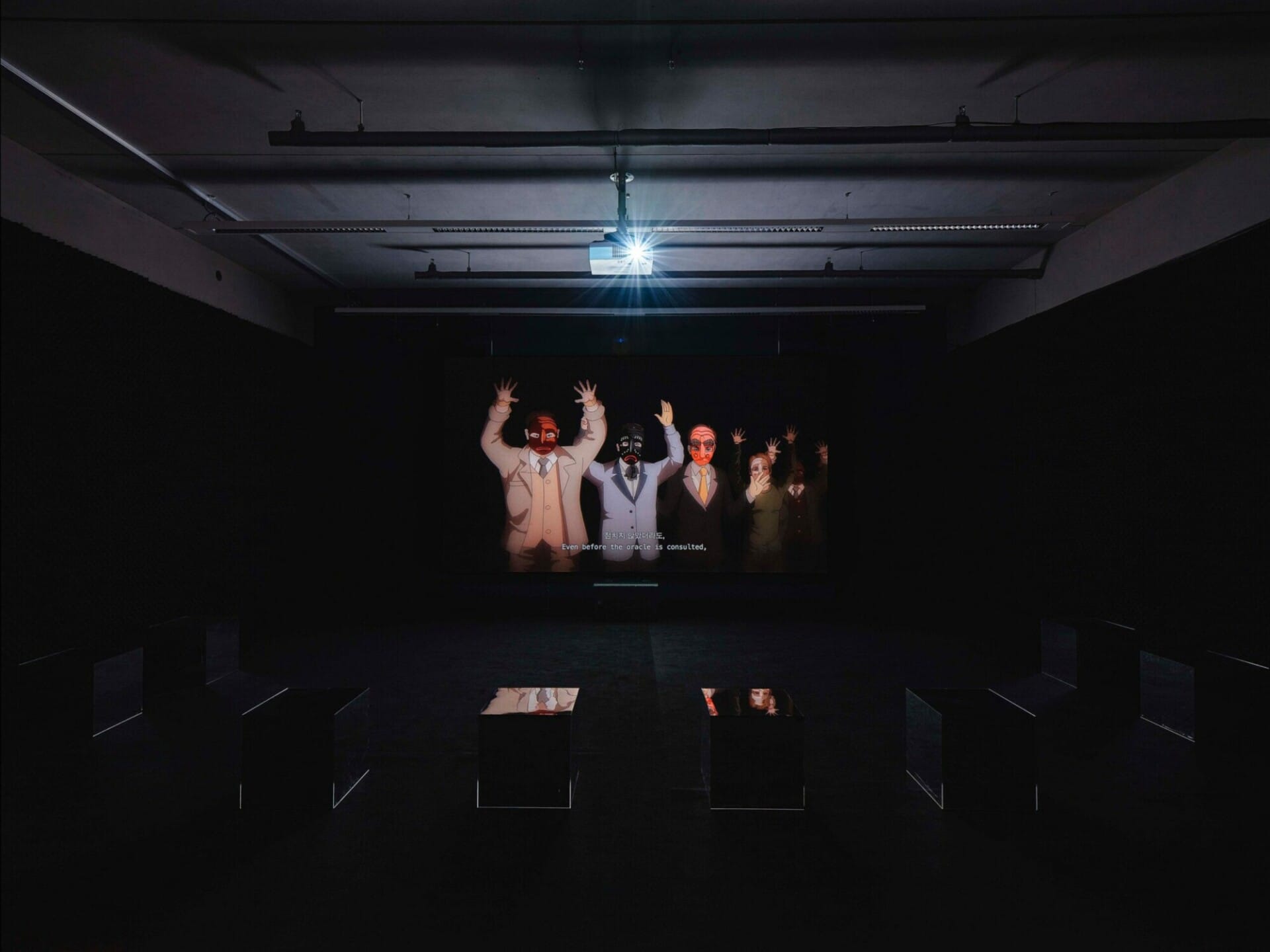
Ho Tzu Nyen. The 49th Hexagram. 2020. Synmchronized double channel HD projection, 6 channel sound. 30 mins 30 sec
We are delighted to announce that Ho Tzu Nyen’s work, The 49th Hexagram (2020) was recently added to the collection of Gwangju Biennale Foundation.
?? —the Chinese term for revolution, consists of two characters. ? translates as life, destiny and mandate; while ? evokes change, and carries with it a tinge of bloodshed. Etymologically, ? refers to animal skin, peeling, and molting. In its early oracle bone script form (???), the character ? evoked the image of a piece of flayed skin with the animal’s head, limbs, tails, and horns still attached. The earliest known appearance of the character ? is in the forty-ninth Hexagram of the I-Ching (??), also known as The Book of Changes, an ancient Chinese divinatory text and a cornerstone of classical Chinese cosmology, which significantly influenced, and was in turn influenced by, the classical cultures of Korea, Japan, and Vietnam.
In this work, the artist considers the significance of the Democratic Movement in Gwangju against the backdrop of the numerous uprisings that recurred throughout the last century of Korean history. Using film stills from the many South Korean movies that depicted these uprisings, Ho assembled a set of storyboards— a sequence of illustrations for the purpose of previsualizing an animation film.
These storyboards were in turn sent to “Screen Breathes Studio”—an animation company based in “The Nation of Morning Calm”—for production. Due to political sensitivities within their own context, the animation team was unable to depict any incidents that directly referenced Korean history. In order to continue the process, the artist allowed the studio to replace any elements within the storyboards that were deemed problematic. This is why the identities of the figures in the resulting animation work were effaced: people appear masked, or wrapped in other skins, as they revolt. And this is also why the names of the studio and the country had to be altered.
- Courtesy of Gwangju Biennale.
Ho Tzu Nyen has been widely exhibited with one person exhibitions at the Yamaguchi Centre for Arts and Media, Yamaguchi (2021), Edith-Russ-Haus for Media Art, Oldenburg (2019), Kunstverein, Hamburg (2018), Ming Contemporary Art Museum, Shanghai (2018), TPAM, Yokohama (2018), Asia Art Archive (2017), Guggenheim Museum, Bilbao (2015), Mori Art Museum, Tokyo (2012) and Artspace, Sydney (2011), amongst others. He also represented Singapore at the 54th Venice Biennale (2011). Recent group exhibitions include 13th Gwangju Biennale, Gwangju (2021), Museum of Contemporary Art Busan, Busan (2019), Aichi Triennial 2019, Toyota City and Nagoya City (2019), Home Work 8, Beirut (2019), Sharjah Biennial 14, Sharjah (2019), Gwangju Biennale, Gwangju (2018), National Gallery Singapore, Singapore (2018), Dhaka Art Summit 2018, Dhaka (2018), Haus der Kulturen der Welt, Berlin (2017), Guggenheim Museum, New York (2016), Queensland Art Gallery / Gallery of Modern Art, Brisbane (2016), Times Museum, Guangzhou (2013), and Witte de With, Rotterdam (2012). He has participated in numerous international film festivals including Sundance Film Festival in Park City, Utah (2012) and the 41st Directors’ Fortnight at the Cannes International Film Festival in France (2009). He was an Artist-in-Residency at the DAAD (Berlin) from 2015 to 2016, and the Asia Art Archive, Hong Kong (2012 to 2015).
About Ho Tzu Nyen ?
About Gwangju Biennale Foundation
